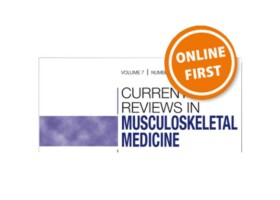
Authors:
Marco-Christopher Rupp, Joan C Rutledge, Patrick M Quinn, Peter J Millett
Abstract:
Purpose of review:
Shoulder instability in patients with underlying joint hyperlaxity can be challenging to treat. Poorly defined terminology, heterogeneous treatments, and sparse reports on clinical outcomes impair the development of best practices in this patient population. This article provides a review of the current literature regarding optimal management of patients suffering from shoulder instability with concomitant hyperlaxity of the shoulder, from isolated shoulder joint hyperlaxity to congenital hypermobility spectrum disorders (HSD).
Recent findings:
Current research shows specialized physiotherapy protocols focused on strengthening of periscapular muscles and improvement of sensorimotor control are a promising non-surgical therapeutic avenue in certain patients, which can be augmented by device-based intervention in select cases. If surgical treatment is warranted, arthroscopic techniques such as pancapsular shift or plication continue to demonstrate favorable outcomes and are currently considered the benchmark for success. The long-term success of more recent innovations such as coracoid process transfers, conjoint tendon transfers, subscapularis tendon augmentation, and capsular reconstruction remains unproven. For patients affected by connective tissue disorders, treatment success is generally less predictable, and the entire array of non-operative and operative interventions needs to be considered to achieve the best patient-specific treatment results. In the treatment of shoulder instability and concomitant hyperlaxity, specialized physiotherapy protocols augmented by device-based interventions have emerged as powerful, non-operative treatment options for select patients. Successful surgical approaches have been demonstrated to comprehensively address capsular redundancy, labral lesions, and incompetence of additional passive stabilizers in a patient-specific fashion, respective of the underlying connective tissue constitution.
For the complete study: Management of Shoulder Instability in Patients with Underlying Hyperlaxity
